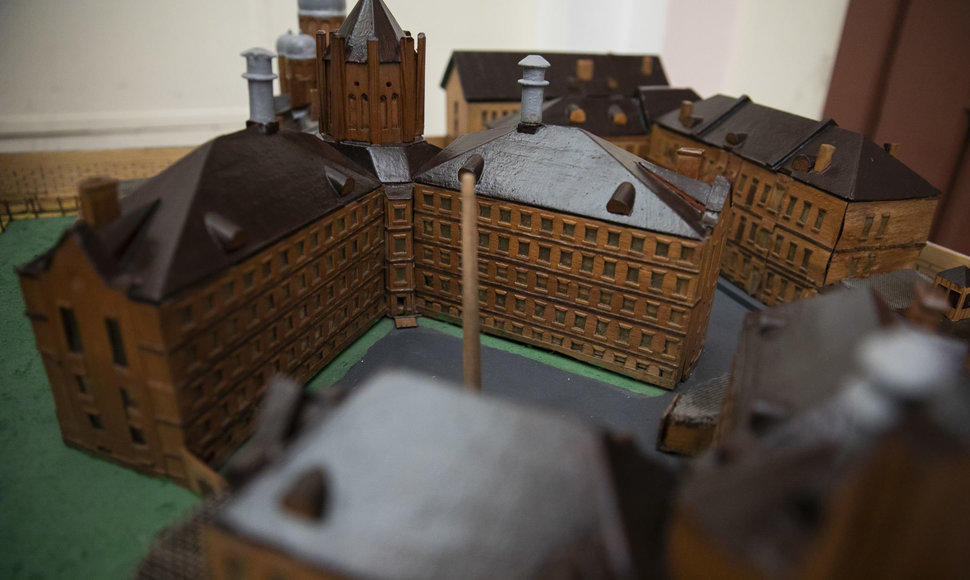Turto Bankas Lukiškės project curator Inga Urbonaitė-Vadoklienė says that after consulting institutions, it turns out that the Lukiškės compound could turn into a multifunctional centre, which could house private business, cultural, leisure, cultural heritage and tourism initiatives.
“Already before launching the opportunity study preparations, we expected that there will be varied expectations for the future of the compound. This is nothing surprising, considering the compound’s scale and its significance. Analysis based on factual data will allow measuring the reality of the expectations and whether the proposed visions reflect heritage protection, cultural and socioeconomic challenges for the compound, helping find the best solutions,” I. Urbonaitė-Vadoklienė says.
The head of mmap, urbanist Martynas Marozas says that the Lukiškės complex transformation and realisation project is of especial importance not just at the scale of Vilnius. However, of the entire country and if this territory’s potential is adequately harnessed, the whole of the Western part of the capital’s centre from Lukiškės Square to Žvėrynas area could be revived for a new life.
“Studies show that prison compounds in central city areas hamper the development of surrounding territories. As such, with Lukiškės Jail being moved out, new opportunities open up not only for the compound being used for the city’s residents but also this could influence broader urban development processes in the city. The Lukiškės compound is without a doubt an object of national importance, which has garnered vast public attention; thus it is important to make well thought out and justified decisions on the future of the compound that would allow combining the interests of various public groups,” M. Marozas says.
CEO of Solid Real Advisors Aurimas Astramskis notes that there rarely are any opportunities to realise state-owned property when it is at the peak of its value. Due to this, the transformation of the Lukiškės compound grants a unique opportunity to obtain vast benefits to the state, to private investors and society.
“To make the best use of the Lukiškės compound’s potential, it is necessary to find a balance between cultural heritage retention, city resident needs and commercial appeal to potential investors. The latter’s interest in the project is no doubt massive. However it depends only one state institutions’ decisions whether and to what extent they will be inclined to invest in the compound’s revival for a new life,” A. Astramskis says.
Director of UAB Eurointegracijos Projektai Simas Lubauskas says that the main challenge when performing analysis is the complexity of the object. According to the expert, the alternative options of Lukiškės compound’s revival are influenced by several factors: the object’s size, its historical use, the value characteristics of the buildings and the territory, as well as its location in the city.
“At this stage, it is important to gather as much information as possible, summarise, identify limitations and involve the public in discussing possible avenues of development. This will create conditions for effective and as beneficial economically to the state as possible use of Lukiškės compound in the future,” S. Lubauskas says.
The analysis will include an analysis of the compound’s historical development, and evaluation of its current condition regarding urbanism, conservation, architecture, real estate cultural heritage, social and economic aspects, also concerning the potential legal acts and regulation related to the territory. The analysing parties will also have to evaluate the real estate development potential for the object, identify social needs in this part of the city and present recommendations for potential urbanistic and architectural functions of the purpose. The analysis will be a part of the opportunity study, which will clarify the most realistic scenarios of Lukiškės compound‘s utilisation. These scenarios will be reviewed and tested in creative workshops, cooperating with various specialisation professionals invited based on an open invitation. At the same time, they will distil the best directions of Lukiškės compound’s utilisation, will model the project’s implementation strategy. The opportunity study will reflect the expectations of institutions and society over the usage of Lukiškės Prison and these are to be consulted throughout the opportunity study’s drafting.
There were discussions of moving Lukiškės Prison out of the city centre for several years and last summer, the prison facility based in the2 hectare territory and compound, 6 of whose buildings are protected by the state, was moved out.
Tasked by the cabinet, Turto Bankas is performing an opportunity study of the compound. This study is to be concluded in April this year. The compound itself is currently managed under trustee rights by the Prison Department under the Ministry of Justice.












